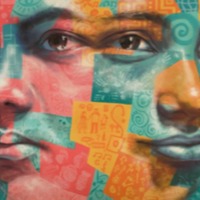
Courtney
There are an estimated 403,000 people living in modern slavery in the United States (GSI 2018). Sex trafficking exists throughout the country. Traffickers use violence, threats, lies, debt bondage and other forms of coercion to compel adults and children to engage in commercial sex acts against their will. The situations that sex trafficking victims face vary, many victims become romantically involved with someone who then forces them into prostitution. Others are lured with false promises of a job, and some are forced to sell sex by members of their own families. Victims of sex trafficking include both foreign nationals and US citizens, with women making up the majority of those trafficked for the purposes of commercial sexual exploitation. In 2015, the most reported venues/industries for sex trafficking included commercial-front brothels, hotel/motel-based trafficking, online advertisements with unknown locations, residential brothels, and street-based sex trafficking. Courtney* was a member NXIVM, a well-known American cult that engaged in sex trafficking, forced labour, and racketeering run by founder Keith Raniere. She tells about her experience of the ESP programme, being branded and forced to have sex with Raniere.

Ali
There are an estimated 403,000 people living in modern slavery in the United States (GSI 2018). Sex trafficking exists throughout the country. Traffickers use violence, threats, lies, debt bondage and other forms of coercion to compel adults and children to engage in commercial sex acts against their will. The situations that sex trafficking victims face vary, many victims become romantically involved with someone who then forces them into prostitution. Others are lured with false promises of a job, and some are forced to sell sex by members of their own families. Victims of sex trafficking include both foreign nationals and US citizens, with women making up the majority of those trafficked for the purposes of commercial sexual exploitation. In 2015, the most reported venues/industries for sex trafficking included commercial-front brothels, hotel/motel-based trafficking, online advertisements with unknown locations, residential brothels, and street-based sex trafficking. Ali was trafficked at the age of 22, in Philadelphia, USA. Heroin addiction led to Ali living on the streets, to prostitution and ultimately, to being trafficked. She was on the streets for five years. This is her story in her own words.
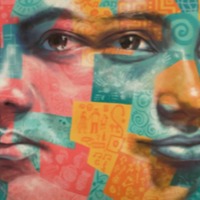
Robin Flemming
There are an estimated 403,000 people living in modern slavery in the United States (GSI 2018). Sex trafficking exists throughout the country. Traffickers use violence, threats, lies, debt bondage and other forms of coercion to compel adults and children to engage in commercial sex acts against their will. The situations that sex trafficking victims face vary, many victims become romantically involved with someone who then forces them into prostitution. Others are lured with false promises of a job, and some are forced to sell sex by members of their own families. Victims of sex trafficking include both foreign nationals and US citizens, with women making up the majority of those trafficked for the purposes of commercial sexual exploitation. In 2015, the most reported venues/industries for sex trafficking included commercial-front brothels, hotel/motel-based trafficking, online advertisements with unknown locations, residential brothels, and street-based sex trafficking. Robin Flemming was 20 years old when she met a man who seemed like everything she was looking for. He was loving, caring and promised her the world. It wasn’t until she moved to Texas to live with him that he began using her for profit. Flemming’s trafficker, whom she now refers to as “the monster,” brought her to a club one day and told her she was going to audition to be a dancer. During her first night of dancing, she earned $3,000. Throughout their marriage, they moved across the country and lived in more than six states. Flemming said her trafficker abused her verbally and mentally, raped her numerous times and occasionally kicked out of her home, leaving her with no place to go. After secretly stashing money at work, Flemming raised about $10,000, which she used to escape from her trafficker. She went to work one day and decided that she would not come back. It wasn't until two and a half years later that her trafficker finally started leaving her alone. Flemming was able to divorce her trafficker in 2007, a year after she saw him for the last time. She then had to work to get her life back to normal. Flemming stayed in exotic dancing for six more years. After counseling, continuous nightmares and a year of being sober, her life has returned to normal. She now lives in Columbia with her husband and daughter and runs a day-care. She is currently trying to repair her relationship with her other daughter, who also lives in Columbia and is married.
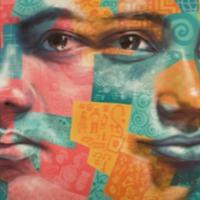
Sophie B
There are an estimated 145,000 people living in modern slavery in Italy (GSI 2018). Italy is a destination, transit and source country for men, women and children subjected to sex trafficking and forced labour. Victims originate most often from Nigeria and other African countries, China, and Eastern Europe, and include ethnic Roma. Nigerians represented 36 percent of the victims who received residency permits in 2017, primarily women and girls subjected to sex trafficking through debt bondage and many coerced under threat of voodoo rituals. Men are victims of forced labour in agriculture in southern Italy and in construction, house cleaning, hotels, and restaurants in the north. Chinese victims work in textile factories in Milan, Prato, Rome, and Naples. Nigerian gangs have expanded and reportedly receive protection from Italian crime networks. Chinese criminal elements also forced victims to work in apartments and in massage parlours. Sophie was just 24 when she travelled from Leeds to Italy to be with the man she believed was her best friend and boyfriend. She thought she was just going on a week’s holiday. Instead, she vanished for six months. Her boyfriend had tricked her, forcing her to begin working as a prostitute to earn money for him. He bullied her, beat her, and pressured her to have sex with strangers. Sophie, an alias, became what she never imagined she would. After six months, Sophie managed to escape and she now runs a survivor support programme for women in England who have been identified as having been trafficked.

Wendy
There are an estimated 403,000 people living in modern slavery in the United States (GSI 2018). Sex trafficking exists throughout the country. Traffickers use violence, threats, lies, debt bondage and other forms of coercion to compel adults and children to engage in commercial sex acts against their will. The situations that sex trafficking victims face vary, many victims become romantically involved with someone who then forces them into prostitution. Others are lured with false promises of a job, and some are forced to sell sex by members of their own families. Victims of sex trafficking include both foreign nationals and US citizens, with women making up the majority of those trafficked for the purposes of commercial sexual exploitation. In 2015, the most reported venues/industries for sex trafficking included commercial-front brothels, hotel/motel-based trafficking, online advertisements with unknown locations, residential brothels, and street-based sex trafficking. Wendy Barnes was trafficked from the age of 15 across the US West Coast for nearly 15 years, from the mid 1980s until 2000. Her trafficker, Gregory Leon Hightower, was eventually arrested and sentenced to life in prison in Oregon. Wendy now lives in Southern California and works full time as a customer service representative. Her narrative is from an interview with Francine Sporenda for the Révolution Féministe website, originally published in French and then in English by Nordic Model Now!, a UK secular, feminist, grassroots women’s group campaigning for the abolition of prostitution and related practices. Wendy has published a book about her experiences titled And Life Continues: Sex Trafficking and My Journey to Freedom (2015).
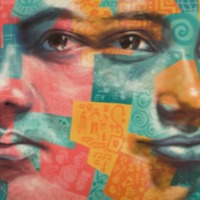
TY
There are an estimated 10,000 people living in modern slavery in Hong Kong (GSI 2018). Approximately 370,000 foreign domestic workers, primarily from Indonesia and the Philippines, work in Hong Kong; some become victims of forced labour in the private homes in which they are employed. An NGO report released in 2016 estimated as many as one in six foreign domestic workers is a victim of labour exploitation. Employment agencies often charge job placement fees in excess of legal limits, and sometimes withhold identity documents, which may lead to situations of debt bondage of workers in Hong Kong. The accumulated debts sometimes amount to a significant portion of the worker’s first year salary. Some employers or employment agencies illegally withhold passports, employment contracts, or other possessions until the debt is paid. Some workers are required to work up to 17 hours per day, experience verbal, sexual or physical abuse in the home, and/or are not granted a legally required weekly day off. TY, a 40-year-old woman trafficked from Ponorogo to Hong Kong (2011), explains the motivation behind the enforcement of this procedure at a training centre in Madiun.
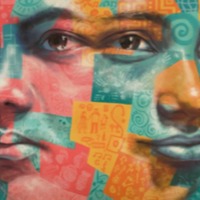
HM
There are an estimated 10,000 people living in modern slavery in Hong Kong (GSI 2018). Approximately 370,000 foreign domestic workers, primarily from Indonesia and the Philippines, work in Hong Kong; some become victims of forced labour in the private homes in which they are employed. An NGO report released in 2016 estimated as many as one in six foreign domestic workers is a victim of labour exploitation. Employment agencies often charge job placement fees in excess of legal limits, and sometimes withhold identity documents, which may lead to situations of debt bondage of workers in Hong Kong. The accumulated debts sometimes amount to a significant portion of the worker’s first year salary. Some employers or employment agencies illegally withhold passports, employment contracts, or other possessions until the debt is paid. Some workers are required to work up to 17 hours per day, experience verbal, sexual or physical abuse in the home, and/or are not granted a legally required weekly day off. HM, a 28-year-old woman from Banten tells of being trafficked from Indonesia to Hong Kong as a domestic worker.
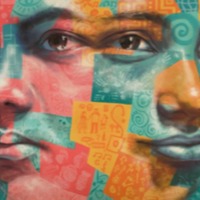
Laila
There are an estimated 136,000 people living on conditions of modern slavery un the United Kingdom (Global Slavery Index 2018). According to the 2017 annual figures provided by the National Crime Agency, 5, 145 potential victims of modern slavery were referred through the National Referral Mechanism in 2017, of whom 2,454 were female, 2688 were male and 3 were transgender, with 41% of all referrals being children at the time of exploitation. People are subjected to slavery in the UK in the form of domestic servitude, labour exploitation, organ harvesting and sexual exploitation, with the largest number of potential victims originating from Albania, China, Vietnam and Nigeria. This data however does not consider the unknown numbers of victims that are not reported. Laila’s family moved from Iran to Cyprus and then to the UK after her mother was diagnosed with Leukaemia. Laila was 12 years old when her mother died, and her father remarried. Her stepmother began planning Laila and her sister’s marriages to older men against their will, fearful that they were becoming too westernised. Not knowing what else to do, Laila and her sisters ran away
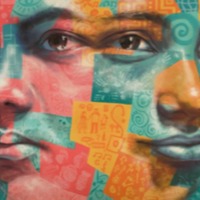
Diane Martin
Despite having the lowest regional prevalence of modern slavery in the world, Europe remains a destination, and to a lesser extent, a source region for the exploitation of men, women and children in forced labour and commercial sexual exploitation. Trafficking for sexual exploitation is the most widespread for of modern slavery with an 84% of victims trafficked for this purpose. The majority of those trafficked for this purpose are women and young girls who often originate from Eastern Europe within the EU as well as Sub-Saharan Africa, with the majority of people being trafficked from Nigeria to various parts of Europe including Italy, France, Spain and the UK through an array of complex trafficking networks. Diane was in her teens when she was forced in to prostitution, first in London and then being trafficked through a prostitution ring to another country. Subjected to physical abuse daily Diane tried to escape and fly back home to the UK, however upon arrival she was met by a trafficker. Diane tells of the physical and mental effects of trafficking, the healing she has gone through and the importance of organisations who support and educate on human trafficking.